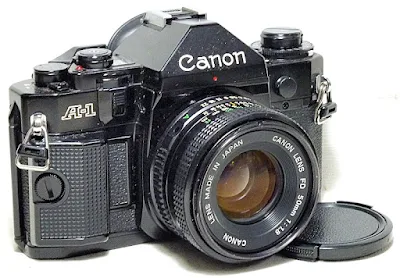Going vintage in photography is a broad category, not typified by any one technology or technique, or the use of specific model equipment. In the post-film era, digital cameras that are about or more than 10 years old, built with technology that has been replaced, or with the compact digital camera whose market has been taken over by smartphones, are also considered vintage. One such case is this ultra-compact digital camera, the Panasonic Lumix DMC-S5, that I am writing about.
I acquired a Panasonic Lumix DMC-S5 recently, a 2012 production of an ultra-compact digital camera that came with a 16MP CCD sensor, and a 28-112mm 4X optical zoom lens, on a whim as a potential replacement to my other favorite ultra-compact, the Nokia Asha 300, a cell-phone camera which I used without a SIM card, as my go-to camera for my morning walks or for a quick dash out of the door.
With a diminutive dimension of only 98 x 57 x 21 mm, the 112 grams (with batteries) Lumix DMC-S5 is just slightly bigger than a credit card, and is just as diminutive as the fixed-focus Nokia Asha 300, which is about 113 x 50 x 13 mm in size, and weighs 85 grams. Over the fixed-focus point-and-shoot Asha 300, the DMC-S5 does come with the bells and tinkles of what a normal camera is supposed to be.
The DMC-S5 looks good when it comes, almost pristine, works perfectly, and came in its original box, with a battery, charger, data transfer cable, a faux-leather pouch for the camera, and installation CD ROM. Costs me just US $15 to get it. To top it off, the camera has a tripod socket which was very convenient for me to use.
A New Use
Where the camera is excellent, however, is on my side-hustle sites, a blog where I do camera reviews and vintage lens tests, and an online Camera Marketplace where I list used film and digital cameras, and other photography accessories for sale. Each item for sale is accompanied by a few images which were dutifully recorded of the product itself.
I have always used a DSLR for these session shots, both for previews and for product sales. The decision to use the DMC-S5 was on a test basis and I was quite taken when the images of the products, taken within the limitations of the camera capability, without flash, were better than expected
One disadvantage that I have with the setup, on the DMC-S5 I do not have control over the exposure setting that the camera sets itself to. Images were shot with a Normal Picture mode with a 1-stop overexposure setting. The images were transferred for post-processing with Tone Correction, Crop, Brightness & Contrast, and Unsharp Mask on the desktop image editor.
As I am not a professional seller nor a professional photographer, setting up a proper photo studio environment for the reviews and product shots was never a serious consideration. I have always worked on a normal table top with a propped background, a vertical plus other ambient light sources, and shutter speeds that automate to always longer than 1/30 second, and the camera secured on a tripod.
The Bottom Line
You will have to understand that going vintage here is not about going for nostalgic looks or a vintage feel of the images captured, neither is it about using cameras that will cost you more to maintain and keep in working order.
It is all about the simple economics of making full use of a bypassed technology that is still valid, completely capable, and usable, at a fraction of the cost you would be expected to pay.



























No comments:
Post a Comment